2005
Aug. 27-28 | As Hurricane Katrina approaches, Geraldine Gettridge, her daughter Asanthe Booker and their families evacuate to the Baton Rouge apartment of Geraldine's other daughter, Nya Booker. Three days later, Geraldine's husband Leonard joins them. |
|
Aug. 29 | Hurricane Katrina makes landfall as a Category 3 storm. Levees are breached in more than 50 places within New Orleans, and 80 percent of the city is flooded. The Mississippi coast is also devastated. | |
Sept. 1 | Hearing the levees have broken, Herbert, Lydia, Gale and her family all drive to Shreveport, La. and the home of Herbert and Lydia's granddaughter Cyntrelle Kapinus. | |
Sept. 7 | Herbert and Lydia Gettridge move to Appaloosas, La., with their son Herbert Jr. Gale and husband Percy go to Baton Rouge. Asanthe Booker and her children leave Baton Rouge to stay with friends in Galveston, Texas, where they end up settling. | |
Sept. 9 | Congress appropriates $60 billion in emergency relief funds to help rescue efforts. | |
Sept. 12 | Herbert and Lydia fly to Madison, Wisc., to stay with their daughter Cheryl Gettridge-Steele. By the end of September, Cheryl's daughter Cyntrelle will move from Shreveport, La., to Madison to help care for Lydia. Meanwhile, another of Herbert and Lydia's sons, Ronald Gettridge, heads to Houston, Texas, where he will stay for seven months. | |
Sept. 15 |  Addressing the nation from Jackson Square in the French Quarter, President Bush pledges to "do what it takes" to rebuild after Hurricane Katrina. | |
Sept. 24 | Hurricane Rita hits Louisiana and Texas as a Category 3 storm. New Orleans is evacuated again. | |
Oct. 4 | New Orleans Mayor Ray Nagin lays off half the city's workforce after the federal government refuses to waive part of the Stafford Act -- the law governing the federal response to disasters -- in order to help the city meet its payroll. | |
Oct. 17 | To oversee the state's rebuilding process, Louisiana Gov. Kathleen Blanco creates the Louisiana Recovery Authority (LRA). | |
Nov. 23 | 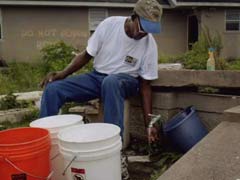 Herbert Gettridge leaves Wisconsin and returns to Louisiana, moving in with daughter Gale who's living in Baton Rouge after evacuating New Orleans. For four months Herbert will drive the 40 minutes back to New Orleans to work on his three houses. | |
Dec. 30 | President Bush signs a rebuilding bill sending $29 billion in recovery funds to the Gulf Coast. Louisiana receives $6 billion and Mississippi $5 billion, even though Louisiana sustained four times as much property damage as Mississippi in Hurricanes Rita and Katrina. | |
2006
Jan. 16 | 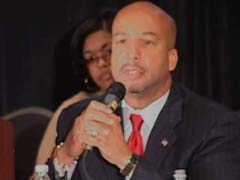 Speaking on Martin Luther King, Jr. Day, Mayor Nagin says the 2005 hurricanes were signs that "God is mad at America," and, referring to the racial make-up of the city, predicts that New Orleans "will be chocolate at the end of the day." | |
Jan. 27 | After months of government inaction and failed proposals, LRA member Sean Reilly meets with Federal Coordinator of Gulf Coast Rebuilding Donald Powell to sketch out what will become the Road Home program: a "direct to homeowner" housing plan that would pay individuals the pre-Katrina value of their home, minus insurance and FEMA payments. Read the Washington Post's assessment of the federal recovery effort five months after Katrina. | |
Feb. 8 | President Bush, in a visit to New Orleans, announces he'll ask Congress for an additional $4.2 billion dollars to establish a housing program in Louisiana. | |
Feb. 20 | Gov. Blanco unveils a plan, based on Reilly and Powell's discussion, to offer homeowners up to $150,000 in grants to repair, rebuild or sell their hurricane-damaged homes. Included in the program's $7.5 billion budget is the $4.2 billion requested by President Bush earlier that month. | |
March 2 | Six months after Katrina, New Orleans population is estimated at 156,140 -- about one-third its pre-Katrina level. FEMA is still negotiating with the city over which houses to tear down, but homeowners need to give permission first. Mayor Nagin estimates that in the Lower Ninth Ward alone, some 5,500 homes are beyond repair. | |
March 16 | The LRA approves Governor Blanco's $7.5 billion housing program, now dubbed the Road Home. | |
May |  Leonard Gettridge installs a FEMA trailer at his home in New Orleans East and starts rebuilding. His wife Geraldine remains in Baton Rouge and comes down on weekends. | |
May 2 | FEMA closes its long-term recovery office in New Orleans, claiming local officials have failed to complete a city-wide planning process. City officials accuse FEMA of abandoning New Orleans. | |
May 20 | Ray Nagin is reelected mayor of New Orleans. | |
May 30 | Housing and Urban Development (HUD) Secretary Alfonso Jackson approves the Road Home program. But Congress still has not signed off on the additional $4.2 billion to fund it. | |
June 9 | The state of Louisiana chooses the private contractor ICF International to administer the Road Home program. | |
June 15 | President Bush signs into law another emergency supplemental in support of recovery and rebuilding of the Gulf Coast. It includes $4.2 billion for the Road Home program. More than four months have passed since the president first proposed the funding. | |
July 1 | The first census estimate after Hurricane Katrina puts New Orleans' population at 223,000, down from an estimated 469,000 in 2004. | |
Aug. 22 | 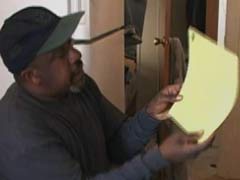 The Road Home opens 10 assistance centers across the state and begins accepting applications. More than 100,000 people initially register for the program. | |
Aug. 29 | The first anniversary of Hurricane Katrina is also the deadline for owners to gut, clean up and/or rebuild their homes, or face penalties from the city. Read the Brookings Institution's report on New Orleans one year after Hurricane Katrina. | |
Sept. 28 | ICF International, the company administering the Road Home program, goes public. | |
Oct. 3 | At housing assistance centers statewide, the Road Home begins accepting appointments, the next step after applying for help. | |
Dec. 6 | The Government Accountability Office (GAO) reports that much of the federal government's Gulf Coast recovery money has been wasted. | |
Dec. 13 | FEMA tells the state that its proposal to use FEMA hazard mitigation money to fund the Road Home program is illegal. The LRA says Federal Coordinator Powell's office told them to factor in that money when asking Congress for additional funds, a claim Powell's office denies. | |
Dec. 15 |  The Road Home reports 88,414 applications received and 85 grants closed. Louisiana lawmakers, citing ICF International's performance, vote 97-1 to cancel the company's Road Home contract. But the governor opposes the move, and ICF stays on the job. | |
2007
Jan. 15 | The Brookings Institution reports new housing permits for October and November 2006 surpassed pre-Katrina levels for the first time since the storm. Home demolitions in the metropolitan area climb to over 4,200, while infrastructure recovery is largely at a standstill. Only 49 percent of public transit routes are in service, a figure that's remained unchanged for the last 12 months. But 90 percent of New Orleans hotels are back in business, and traffic at the Louis Armstrong Airport continues to rise. | |
March 2 | The Road Home reports 111,887 applications have been received and 2,780 -- roughly 2.5 percent -- grants have been closed. | |
March 12 | Shares of ICF International rise on news that the company's fourth-quarter revenue more than doubled, driven by the Road Home contract. | |
March 16 | HUD informs state officials that they must give homeowners the option to receive their Road Home money in a lump sum or else subject each applicant to a series of environmental and labor-law reviews. | |
March 20 |  Gov. Blanco announces she will not seek re-election, saying she wants "to work without interference from election-year politics." Blanco had been criticized for the state's initial response to Katrina and for the Road Home's problems. | |
April 25 | The Road Home program passes 10,000 closings. LRA Housing Task Force Chairman Walter Leger calls this progress, but acknowledges Louisianans are frustrated with the pace of the program. At this rate, the Road Home won't finish distributing grants until June 2009. | |
May | Leonard and Geraldine Gettridge finish major renovations and move back into their home in New Orleans East. | |
May 10 | LRA director Andy Kopplin says the Road Home is facing a $2.9 billion projected shortfall, due to a more applications, higher repair costs and lower insurance payments than expected. The program will be an additional $1.2 billion short if FEMA doesn't release hazard mitigation funds the state counted on when designing the program. | |
May 24 | 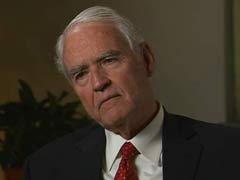 At a Senate Hearing on Disaster Recovery, Gulf Coast Coordinator Powell says (PDF file) additional federal funding for the Road Home will be a tough sell because the shortfall was caused by the state changing the program to cover wind damage as well as flood damage. The state, meanwhile, blames insurance companies for underpaying on wind damages. Listen to an NPR report on the Road Home program's problems. | |
June 11 | The Road Home reports nearly 145,000 applications received and more than 25,000 grants closed. The program has pledged $6.4 billion to more than 85,000 homeowners. Even at this accelerated pace, it may be until May of 2008 before all currently open applications are processed. | |
June 14 | New Orleans has yet to secure funding for its plan to redevelop 17 targeted neighborhoods. It is unlikely that the city will have "cranes up in the skyline" by September, as city recovery czar Ed Blakely has promised. | |
June 25 | The LRA votes to shift $627.5 million previously slated for infrastructure repairs to address the Road Home shortfall. The move is designed to meet the $1 billion match Congress has mandated before it commits additional federal funds. | |
July | 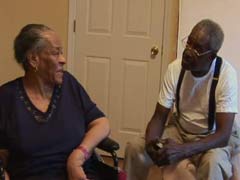 Lydia Gettridge returns home from Madison, Wisc., to her rebuilt house at 5027 North Roman Street in the Lower Ninth Ward. | |
July 31 | Today is the deadline for applications to the Road Home program. About 9,000 applications are recorded on this final day, and more than 185,000 overall. The LRA estimates the program will run out of money by mid-December and 49,000 eligible homeowners won't receive grants unless Congress provides extra funding. | |
August | Ronald Gettridge and his family move back into their home in the Holy Cross neighborhood of New Orleans. | |
Oct. 16-17 | In Washington, Louisiana officials meet with the White House and members of Congress to discuss the projected Road Home shortfall, now estimated at $3-4 billion. FEMA announces that it will revisit its eligibility requirements for the use of hazard mitigation funds as part of the Road Home. | |
Nov. 8 | Congress passes a continuing resolution to fund the federal government. Included in the bill is the $3 billion to cover the Road Home shortfall. | |
Dec. 7 | The LRA announces that, with $1 billion from the state and $3 billion from Congress, the Road Home is now fully funded. | |
2008
Jan. 25 | One month after moving back into their rebuilt home in the Lower Ninth Ward, Gale Gettridge-Branon and her husband Percy receive their Road Home check. | |
Mid-February | Seven months after his wife Lydia returned home, Herbert Gettridge receives his check from the Road Home program. | |
Feb. 29 | Federal Coordinator of Gulf Coast Rebuilding Don Powell announces his resignation. "My belief is it will be some time before this area is recovered," he tells the Associated Press. | |
March 13 | The New Orleans Times-Picayune reports that before leaving office, Gov. Blanco's administration increased ICF International's contract to manage the Road Home by $156 million. The report comes two days after the contractor requested bids from collection agencies to recoup overpayments made to homeowners. | |
July 28 | The state of Louisiana announces it will extend the Road Home program to help homeowners who sold their homes at a loss before the start of the program. | |
August | The Brookings Institution releases a third-anniversary edition of its New Orleans Index tracking the city's post-Katrina comeback. The city has regained 72 percent of its households and 70 percent of its jobs. But progress seems to be slowing or even stagnating, and much work remains to be done on the city's levees. | |
Nov. 12 | Civil-rights attorneys file a federal class action lawsuit against HUD and the LRA, alleging that the Road Home program discriminated against black applicants by awarding them smaller grants than white applicants. | |
Nov. 23 | 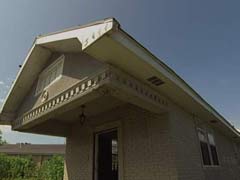 The city demolishes one of Herbert Gettridge's houses, despite Mr. Gettridge's attempts to have it designated an historic landmark. | |
Dec. 10 | The state inspector general reports that the Blanco administration's $156 million increase to ICF's Road Home contract was justified. But the report finds that conflicts between the LRA and the Office of Community Development -- the two state agencies that oversaw the program until Blanco's successor Gov. Bobby Jindal reorganized -- created confusion and increased costs. | |
Dec 29 | The Road Home program releases its latest statistics: 185,106 applications recorded, 152,276 eligible applicants, $7.5 billion disbursed and average amount awarded - $62,598. | |